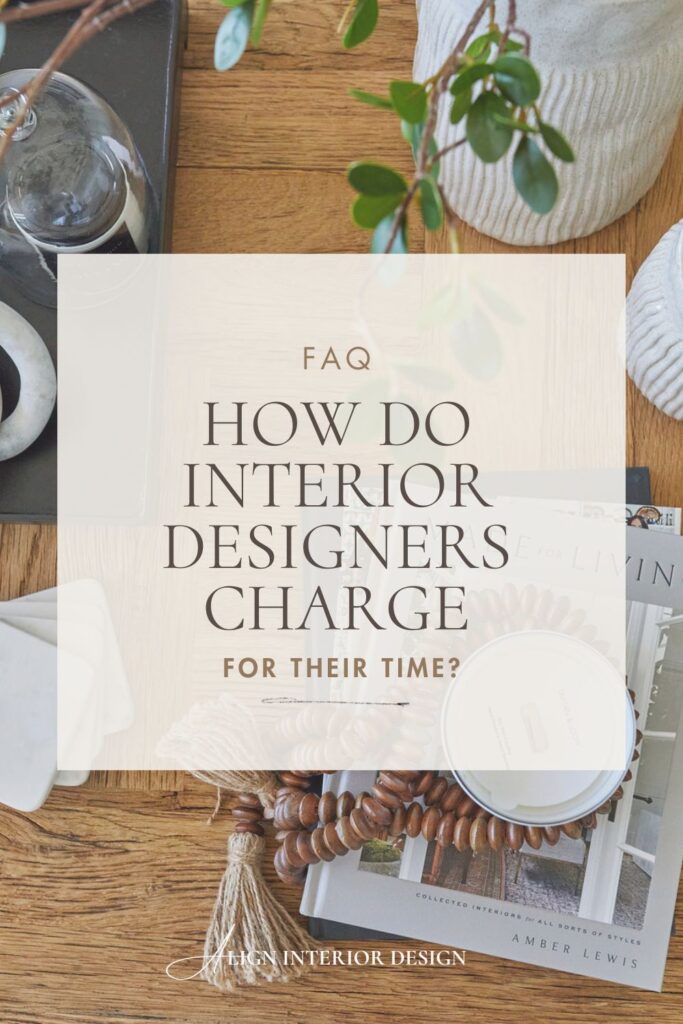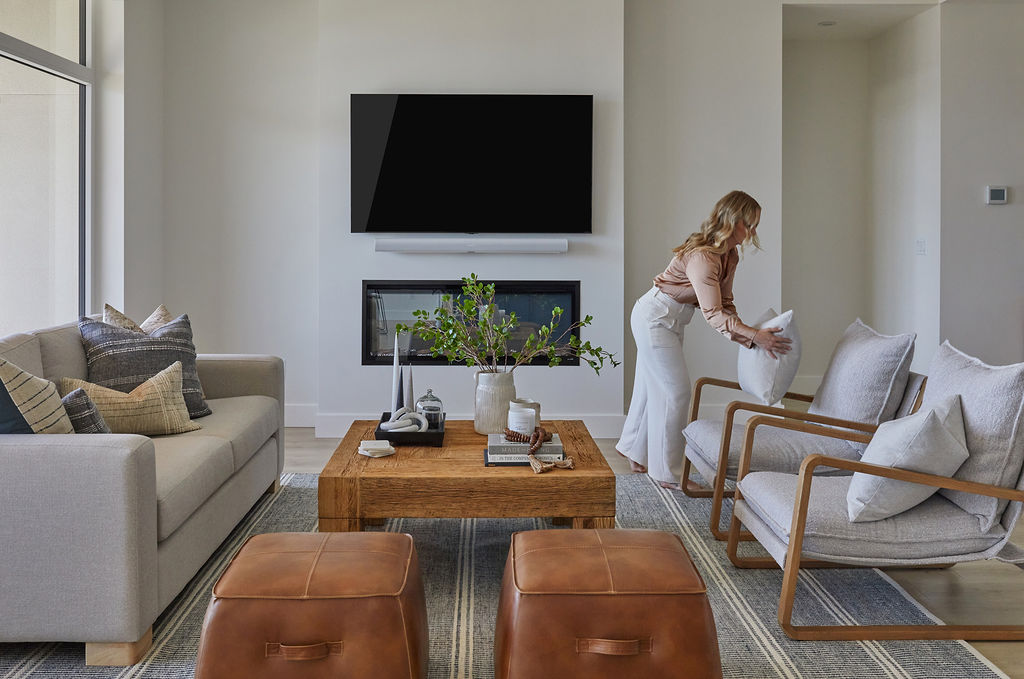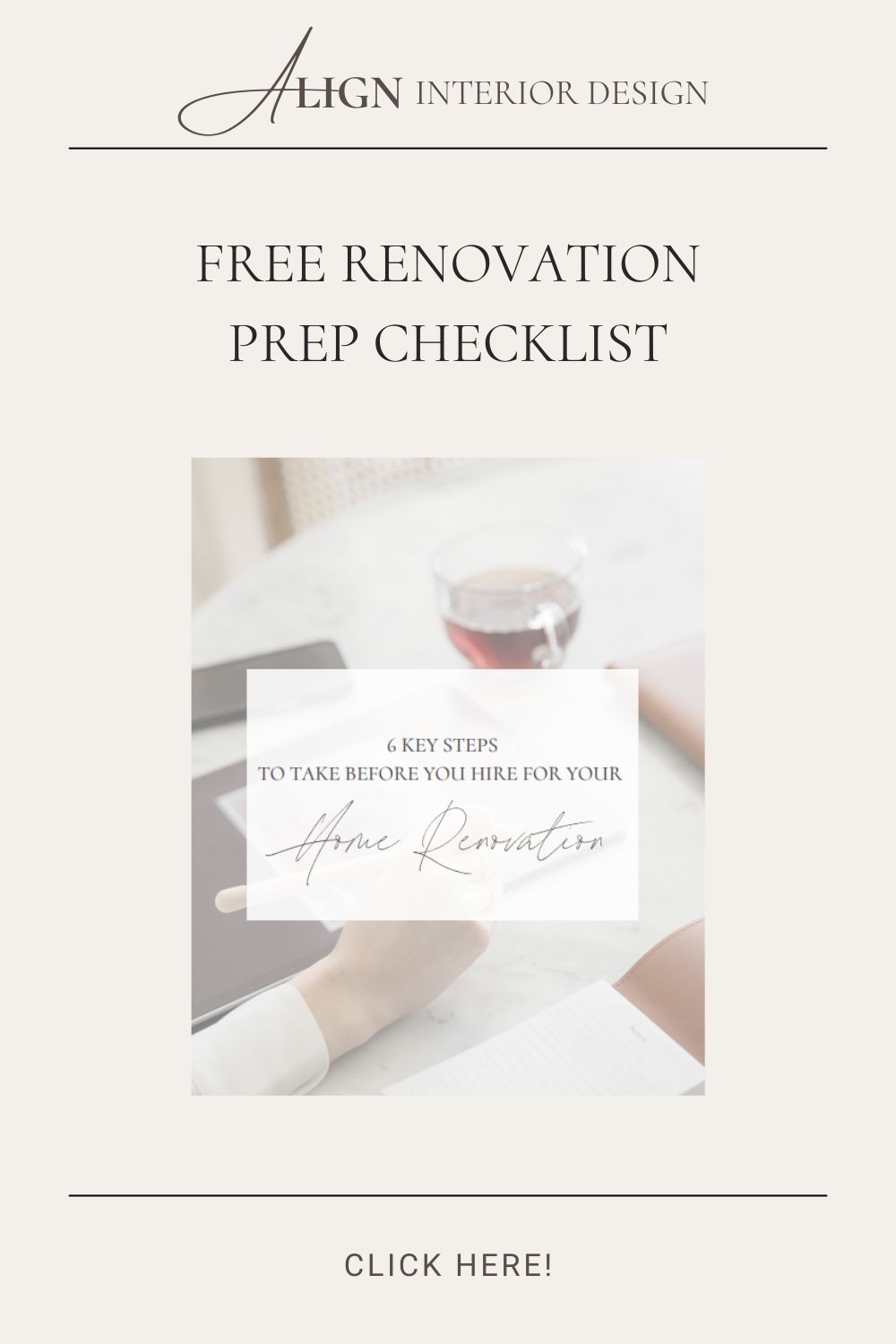Ever wondered how interior designers charge? Let’s demystify the world of interior design costs together.
From hourly rates to fixed fees, I will outline the various estimation strategies that designers typically use so you understand what it means when you are provided a proposal for their time.

Most Common: Hourly Rates
A Dance of Time and Creativity
Imagine a blank canvas full of potential. That’s precisely what your home is to an interior designer. Hourly rates are like a dance between the designer’s creativity and the ticking clock. The more intricate the design, the more time it takes. This flexibility ensures your project gets the attention it deserves, but it might leave you wondering about the final bill.
What Can I Expect As An Hourly Rate For an Interior Designer in Vancouver, BC?
Project Types: In Vancouver, BC, hourly rates for Interior Design Firms usually range from $75/hour to $250/hour. The hourly rates can differ widely based on factors like the firm’s experience, education, and reputation. Additionally, they can vary depending on the project type. For instance, New Build (new home) projects or large-scale renovations that require interior construction drawings, also known as architectural drawings, typically charge $115/hour or higher. Lower rates typically come from design firms that focus on cosmetic upgrades or more furniture and decor related elements.
Tiered Rates: Some design firms opt for tiered rates for different service types or employee titles. For example, they might have rates like $150/hour for a Principal Designer, $125/hour for an Intermediate Designer, and $80/hour for a Junior Designer.
Location or Area: Rates can differ based on the specific location or area of the project.
Retainer: Often designers who charge hourly will require a retainer to start your project. Depending on the scope of your project, this retainer can fall anywhere between $2,500 – $10,000.
What Does the Hourly Rate Cover?
Inclusions: Firms that utilize an hourly rate fee structure usually bill for all time spent, from sourcing materials to meetings and actual implementation. Time is tracked, and you can expect to receive invoices either bi-weekly or monthly, detailing the time expended.
Our Advice: When contracting with a firm that employs tiered rates, it’s beneficial to know who your main point of contact will be. Even companies with an hourly rate structure typically provide estimated ranges of hours required for your project. It’s important for you to understand whether the hourly range applies to the Principal Designer, Intermediate Designer, or Junior Designer’s time, enabling you to gauge your approximate investment amount accurately.
Is Hourly Rate a Good Choice for my Interior Design Project?
Con: What one Interior Designer may be able to do in a day, another designer may take a week to accomplish. With interior design being such a creative process, it’s hard to estimate time accurately. Unlike professions with more defined tasks, like accounting, designers’ work includes a broad range of activities. This hourly billing approach can sometimes detract from the enjoyment of the design process, causing unnecessary stress for clients when they continue to see the invoices roll in.
Pro: You know what your cost per hour will be, and for a client who requires small scopes of work or a project that requires more miscellaneous tasks, this can be a cost-effective, flexible way to work with a designer.
This model is best for homeowners that have some budget flexibility and truly want customization and flexibility in response times.
best for Small projects: block hours
Your Budget, Your Control…. With a Catch
Let’s talk block hours – it’s like buying your designer’s time and creativity in bundles, commonly used for small projects. You get budget control, predictability, and flexibility. However, predicting exact hours is like forecasting weather – not always accurate. Be cautious, though; when your hours run out, your designer might not be available for the next block, potentially leaving your project incomplete. If your designer suggests this, be clear on your goals, and have them estimate the hours needed to finish the job effectively.
How Do Block Hours Work?
If you go over your block of time: Clients usually have the option to purchase additional hours at a predetermined rate. However repurchasing new blocks is based on the designer’s availability and you could be subject to waiting.
Unused hours: Typically, unused hours may expire after a certain period however it’s a good question to ask prior to hiring with this structure.
Better than paying by the hour? Block hours guarantee your designer’s availability for the specified amount of time, the biggest pro of this fee type is the certainty of your investment however the biggest risk is if you run out of hours and require another block of time , you risk having to wait until their next available block of time.
This model is best suited for small, perhaps miscellaneous type projects where you want professional advice on specific topics or small spaces.
Most Secure: Fixed Fee
The Clarity of a Set Path
Ever been on a road trip with a set itinerary and all expenses covered? That’s the fixed fee model. You know exactly what you’re paying for, and there are no surprises along the way. But, like any road trip, it requires a well-defined plan. Stray from the path, and there might be additional costs waiting around the corner Fixed fee proposals are typically the most transparent right from the start. They come in at a potentially higher price point than hourly proposals, but they provide a sense of security, knowing the costs in advance.
How Does a Designer Determine a Fixed Fee for Your Project?
How it’s Calculated: Designers typically assess factors such as project complexity, scope, and their own expertise when determining a fixed fee. In some cases their fee is calculated based on a cost per square foot.
How it Stacks up vs. Hourly: Fixed fee is less common in the interior design industry simply because it takes years of time tracking to truly understand how long it takes to complete tasks, as well as the average time it takes homeowners like you to make decisions. The biggest risk for designers charging a fixed fee is working with an indecisive client, so they will carefully craft their proposals to clearly describe what is included and not included in that fixed fee. In many cases, a fixed fee can be less expensive for the homeowner because if the designer chooses to take additional time sourcing the perfect item, that is on them, not the client. Now, that poses the question, is there a chance a designer might cut corners to be more profitable? Sure, there is always a chance, but the reality is most designers start their design business because they love what they do. So if you find someone who you feel you can trust, is transparent, honest, and passionate about design, and (more importantly) has a clear contract that you understand, you are likely in good hands. – When in doubt, as friends, family and colleagues for a referral!
How it Differs From Block Hours: Block hours is a guarantee of time availability not a guarantee to complete a specified list of deliverables. The fixed fee model is guaranteeing a specified list of deliverables for a specified price.
This model is best suited for busy homeowners seeking guided assistance, that have a clear idea of their goals, and desiring the reassurance of understanding their design service investment upfront.
Conclusion
So, now that you understand the different billing types you can make an educated decision on how comfortable you are proceeding with your interior design quote. It’s all about aligning your expectations with the nature of your design journey. Want the process to be a bit more open ended and flexible because you are diving in and don’t have a totally clear plan of what you want and need. Finding a designer that provides hourly billing might be the best for you. Dreamt of this for a long time and have a pretty good idea of what you want to accomplish but want someone to help you make it a reality and guide you through the process efficiently, a fixed fee billing structure might be right for you.
Closing Thoughts + How We Charge at Align Interior Design:
As you embark on the exciting journey of transforming your space, remember that your collaboration with an interior designer is more than just a financial transaction – it’s a partnership in creating a space that feels uniquely yours. At Align Interior Design, our design services are outlined in a fixed fee format, and our support during construction is billed hourly. This hybrid model enables us to guide you through a structured yet collaborative design process while ensuring timely completion. With a track record of over 100 home projects, I have a clear understanding of the hours required to finalize your design package for handoff to your contractor/build team. We maintain control over most variables during the design phase with a clearly defined project scope, offering you the security of a predetermined investment. However, during construction, we remain your advocate, utilizing hourly billing to provide support when needed amidst the myriad variables of the process.
Planning a renovation soon? Check out our free resource “The 6 Steps to Take Before Hiring for Your Home Renovation“. Download this free checklist to set your home renovation up for success. – It includes a section on how to estimate what your professional fees and renovation budget should be for your project.
Have questions about your specific project contact us by filling in our inquiry form aligninteriordesign.ca/contact . We would love to hear from you!
If you’re ready to explore the world of interior design, reach out to our team. Let’s turn your design dreams into a reality! We will help you design your dream home with confidence. aligninteriordesign.ca/contact

